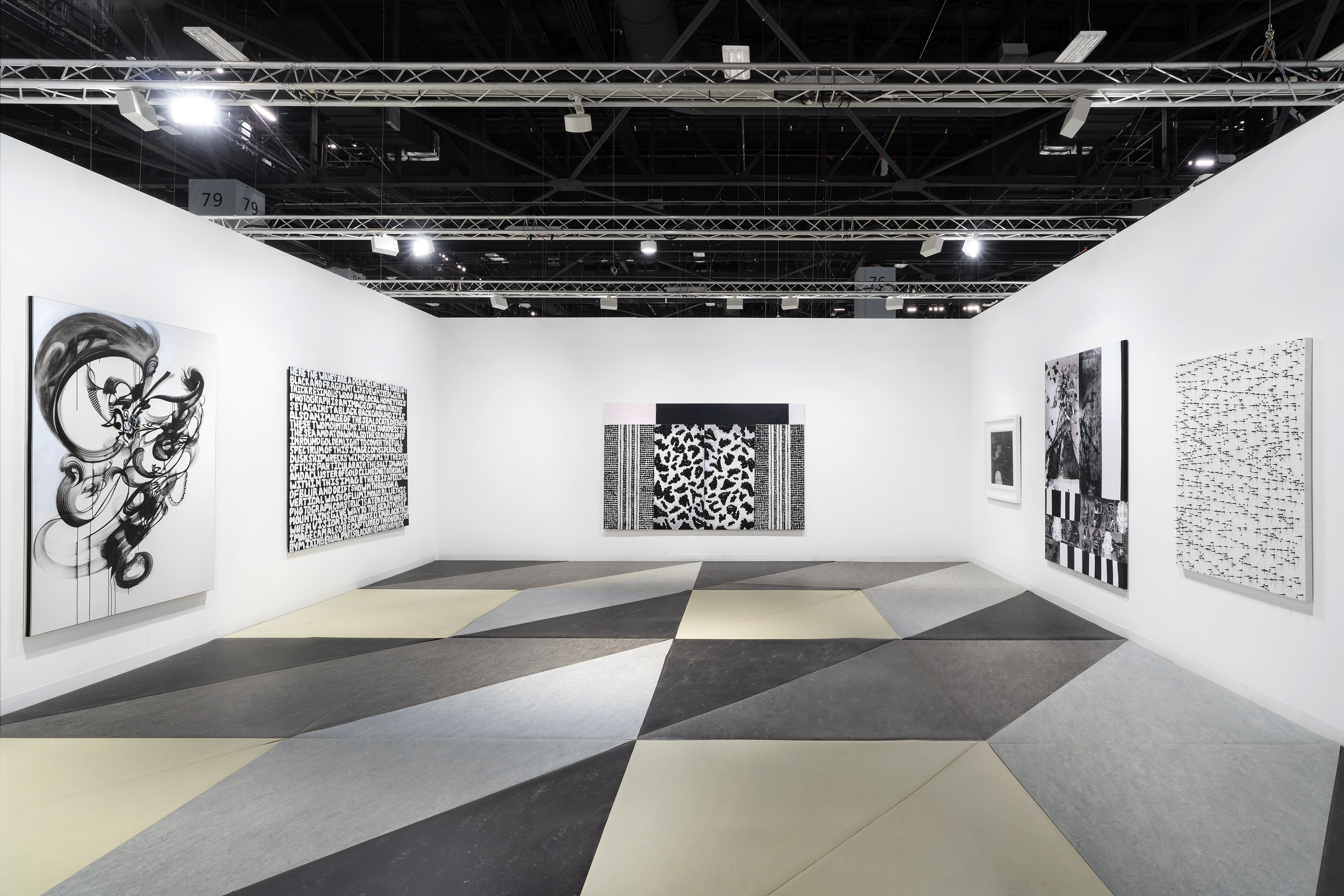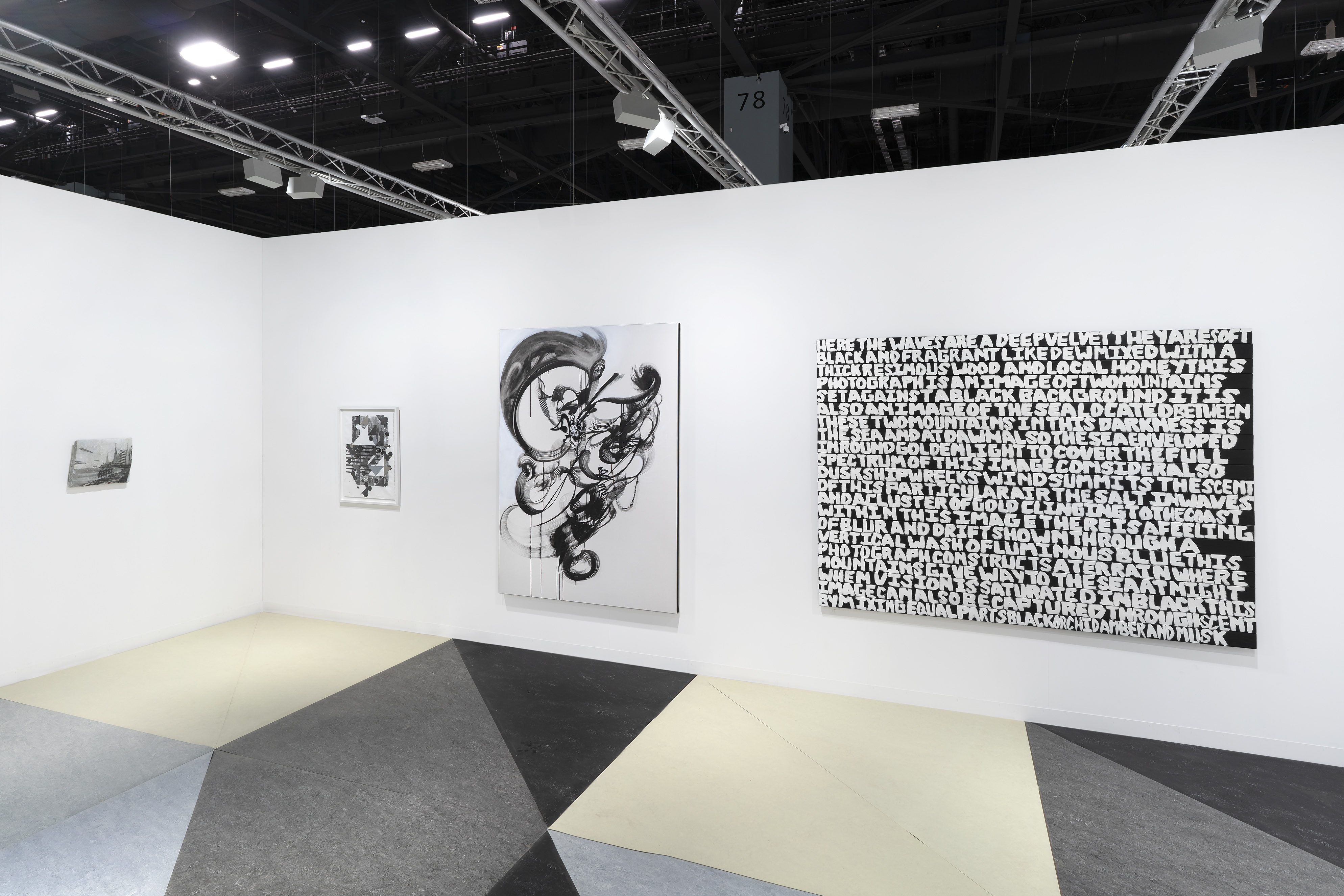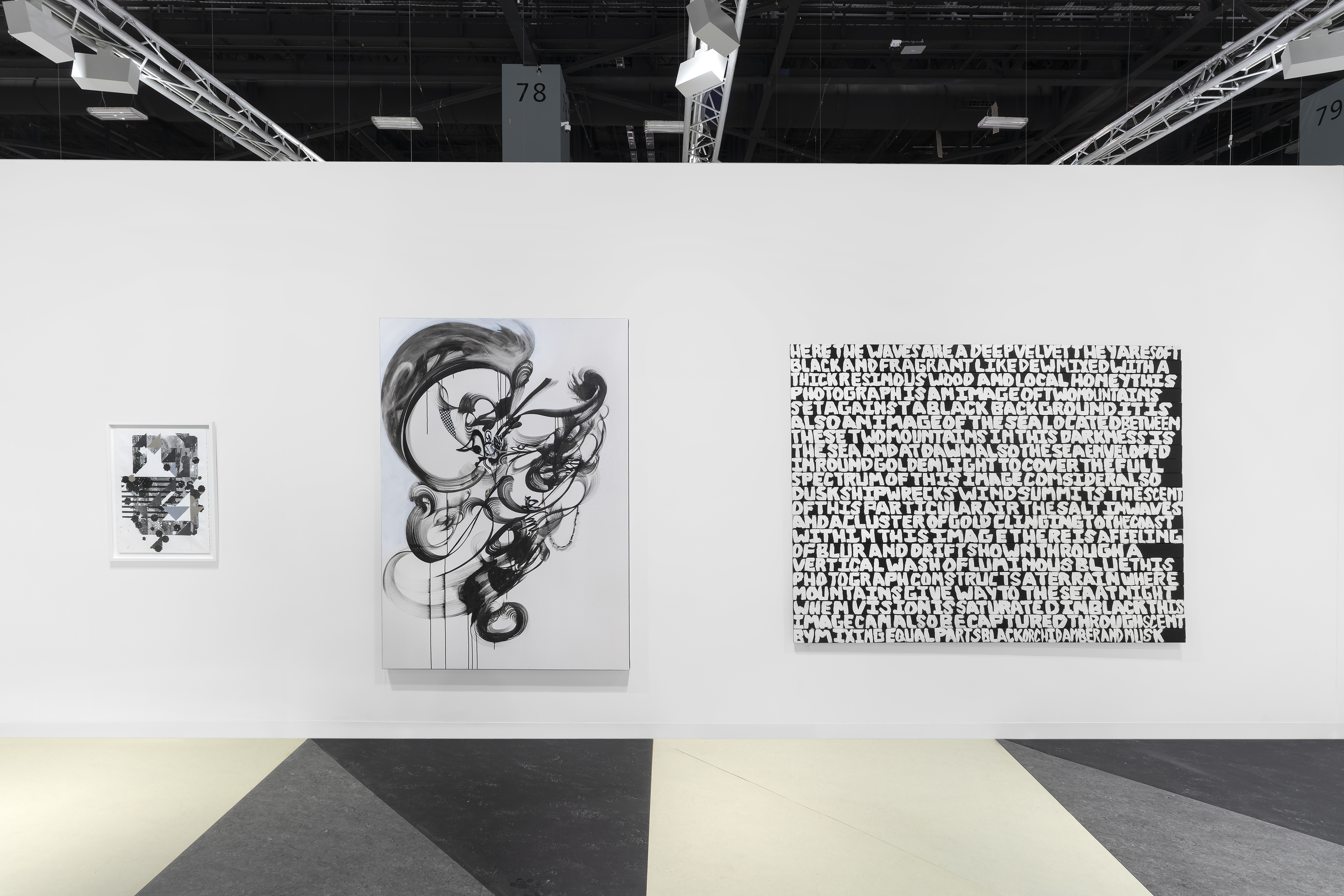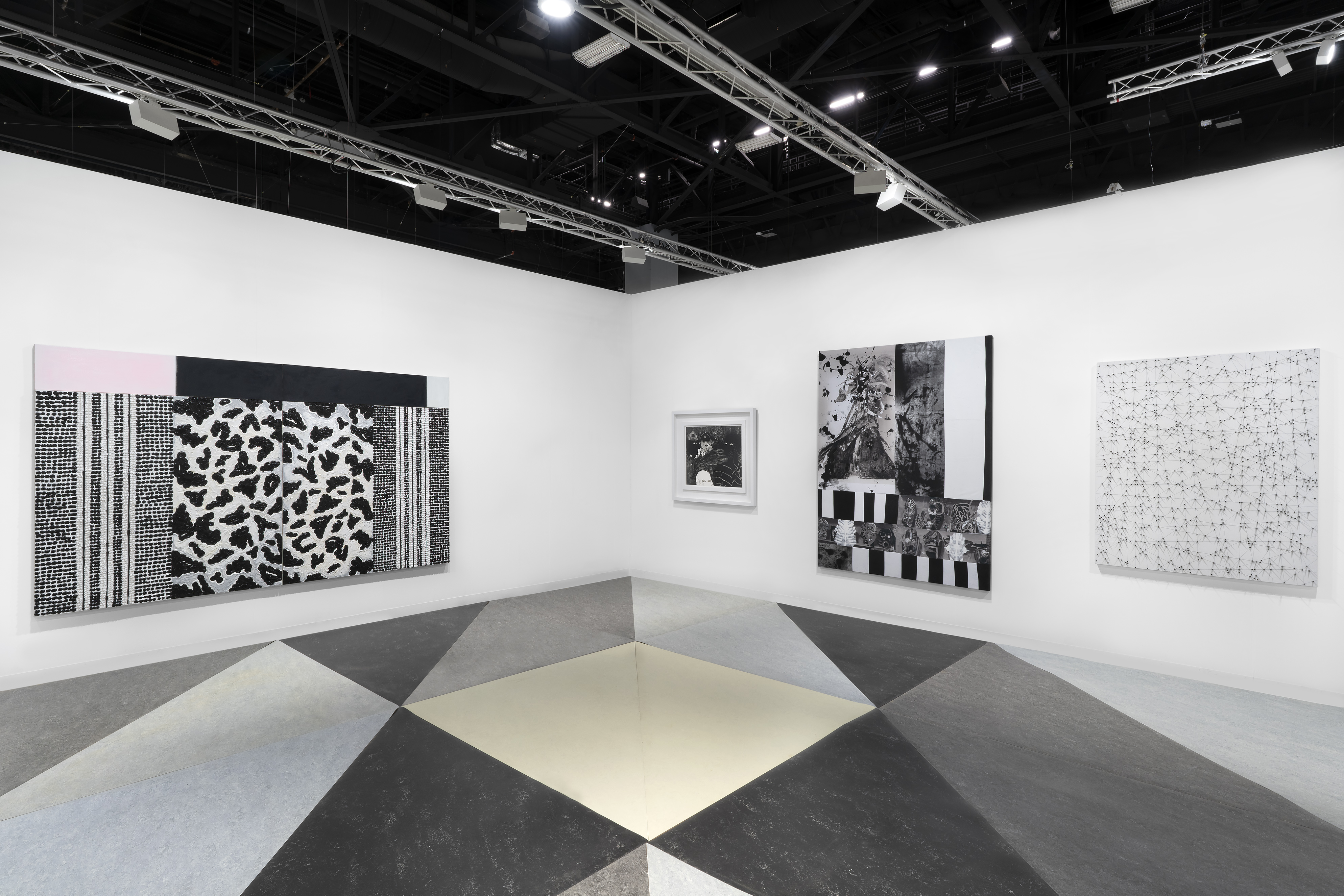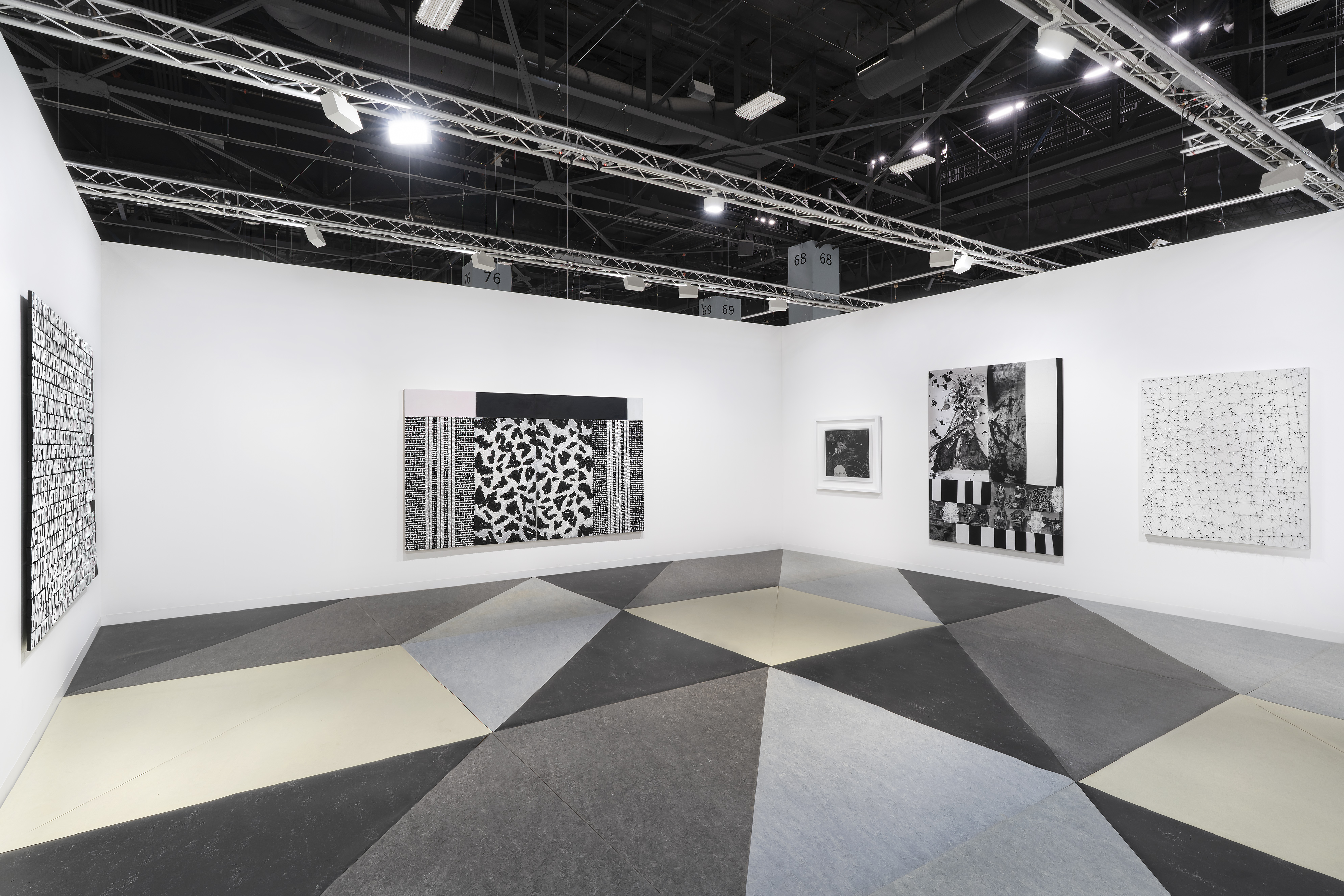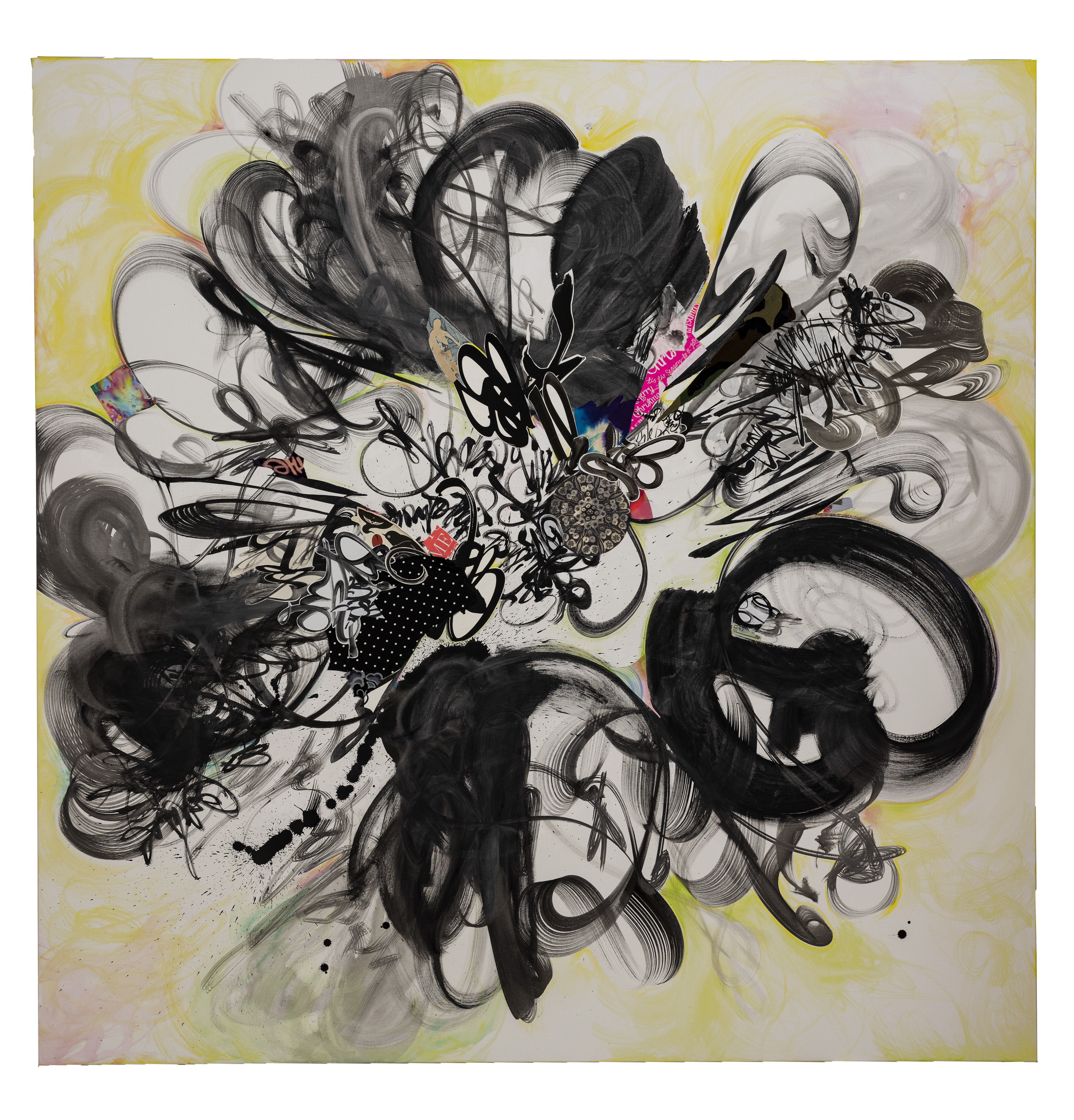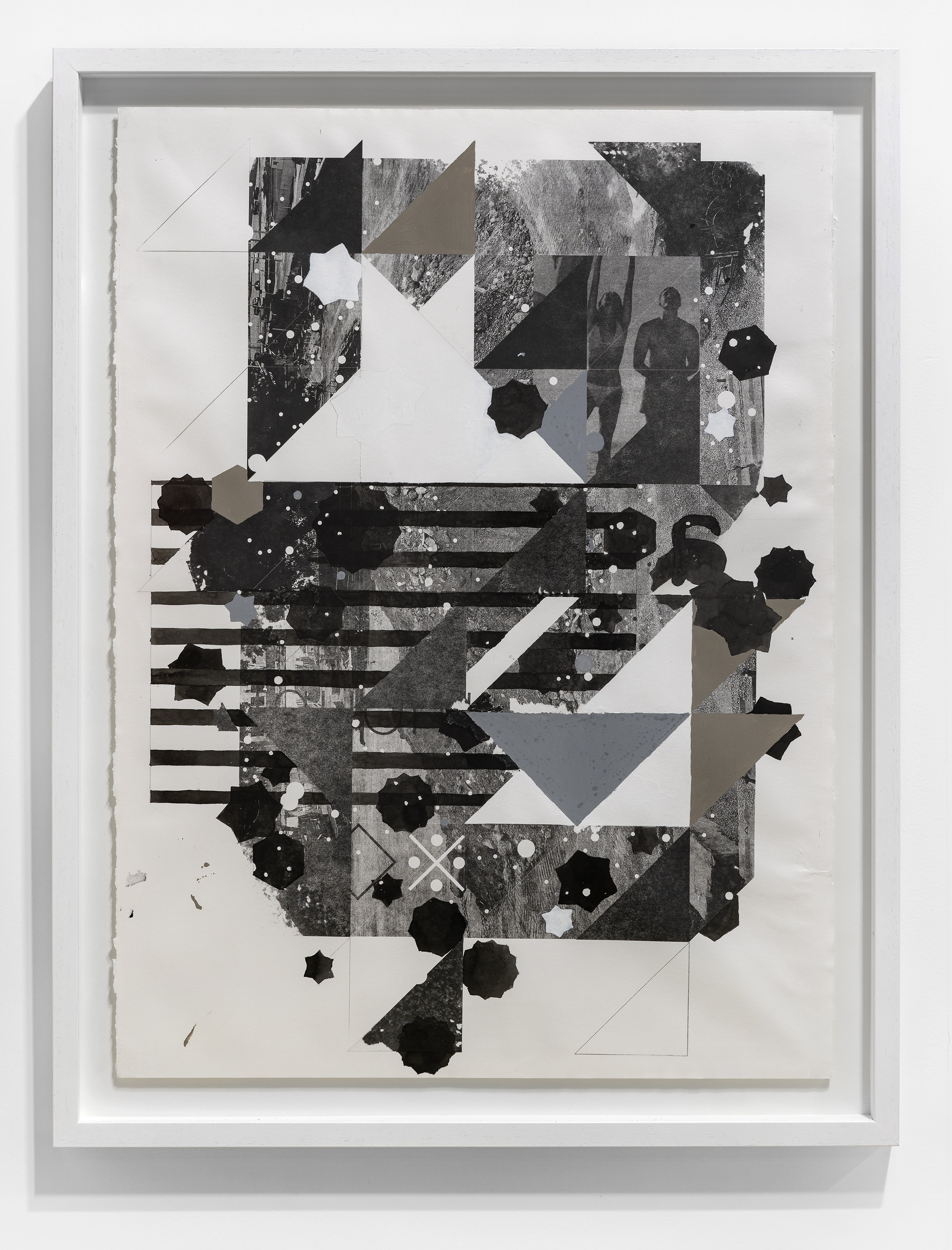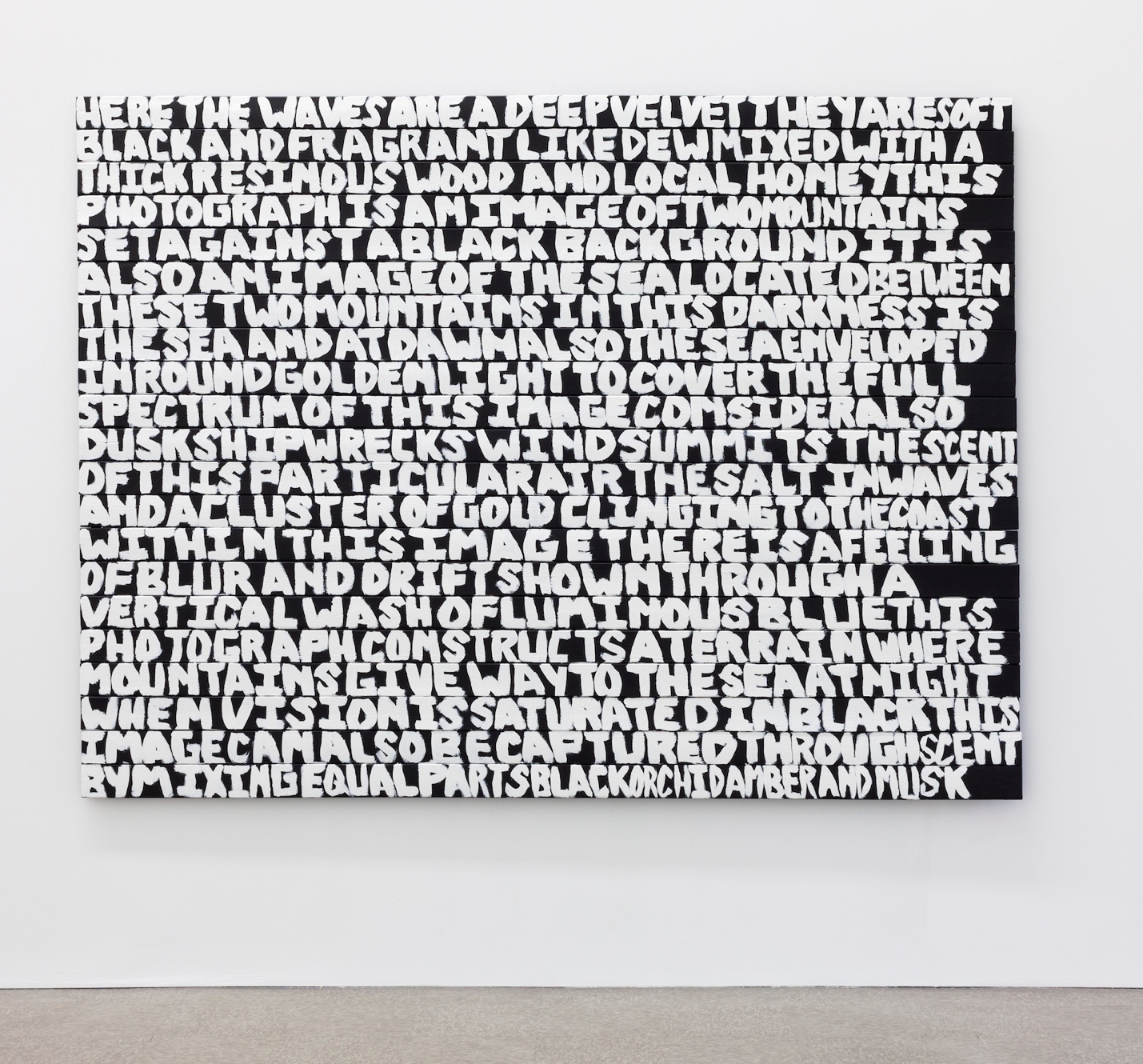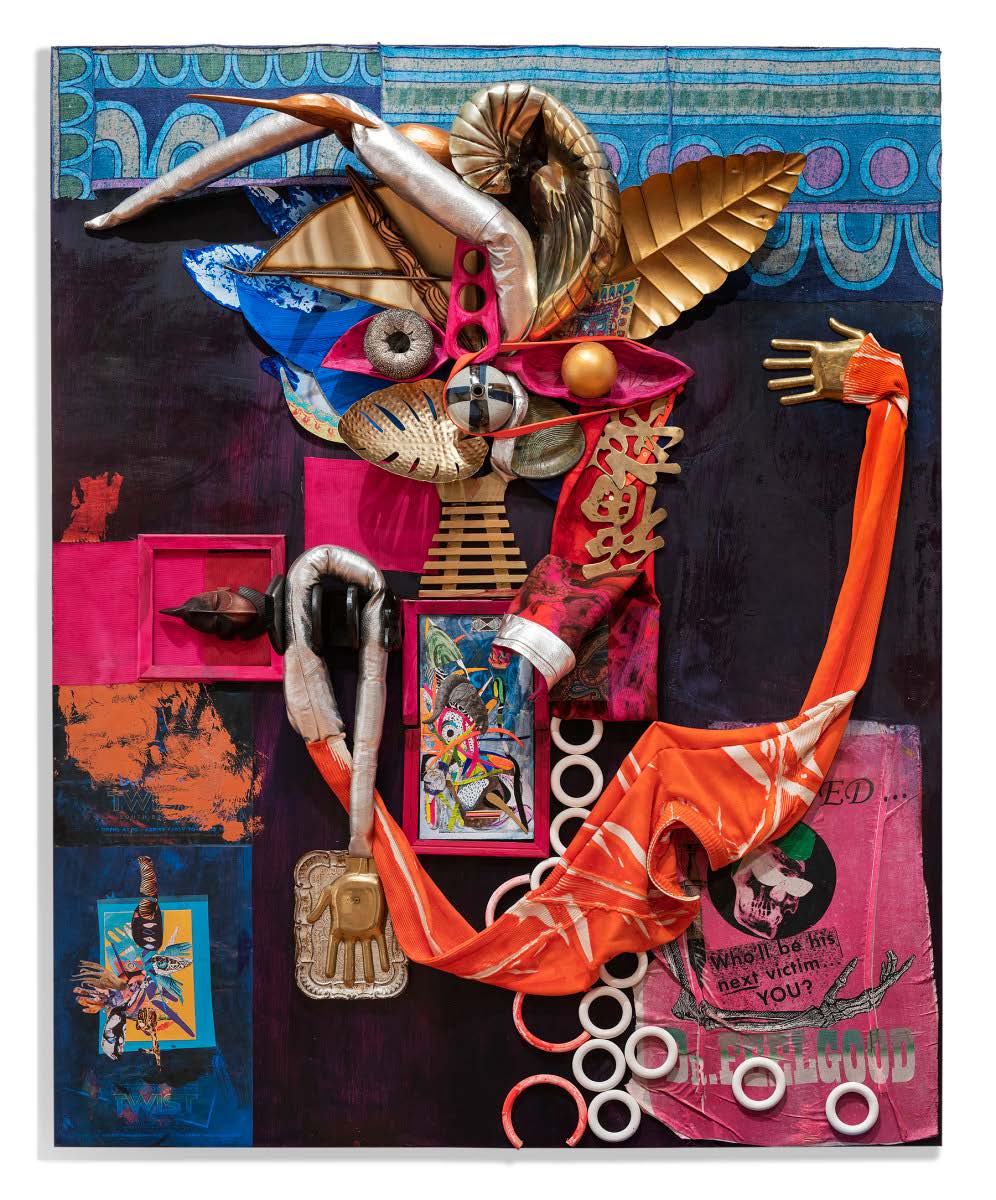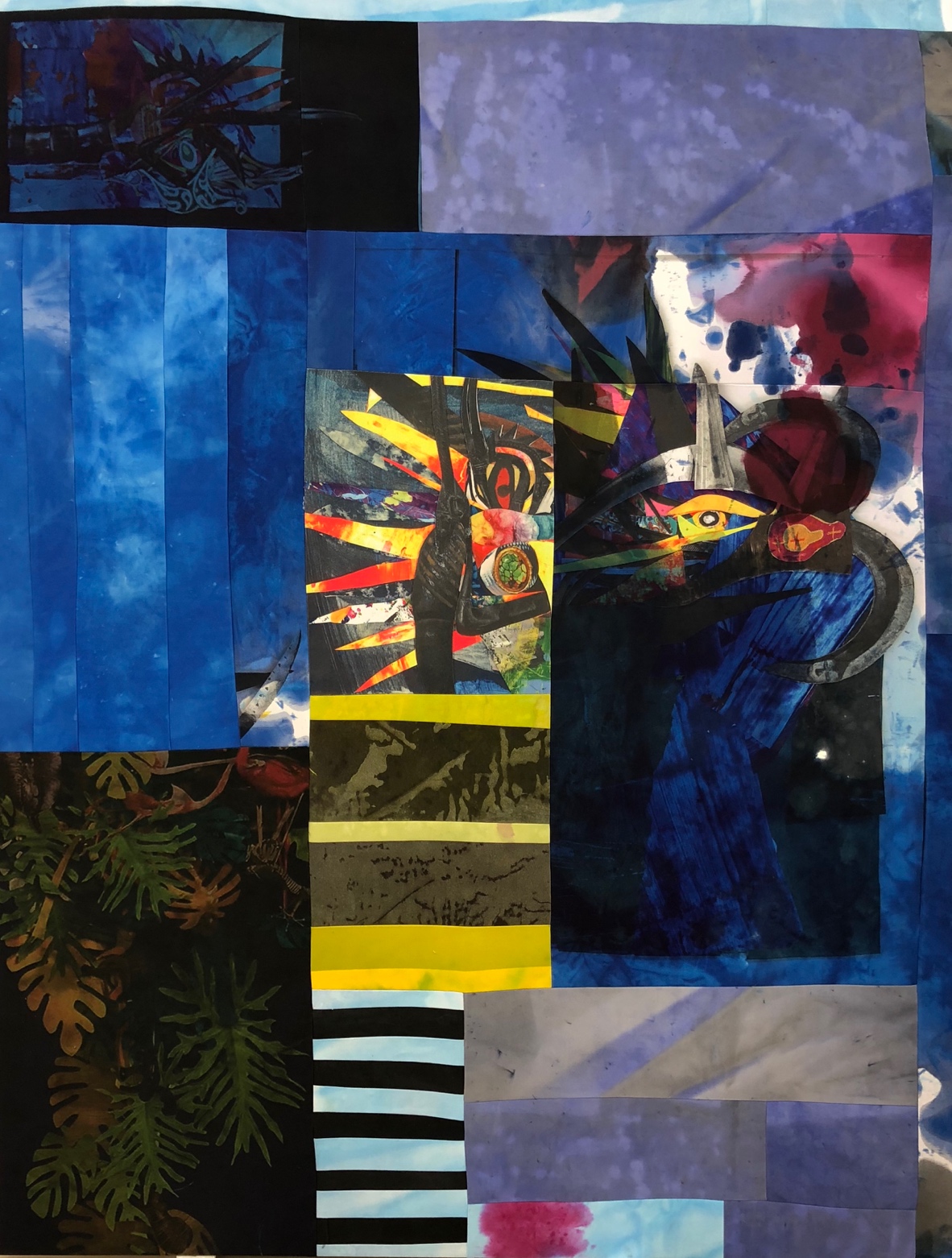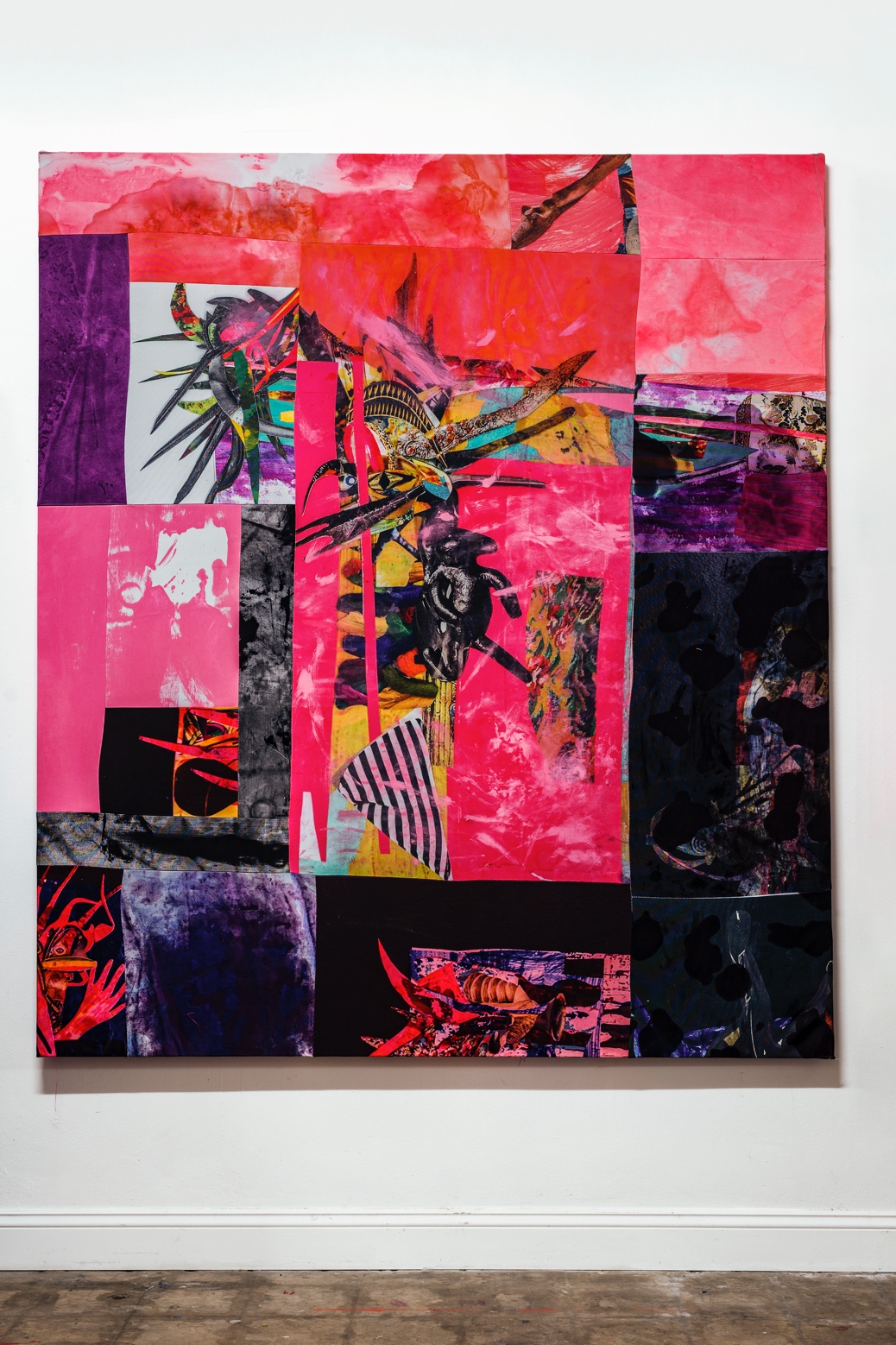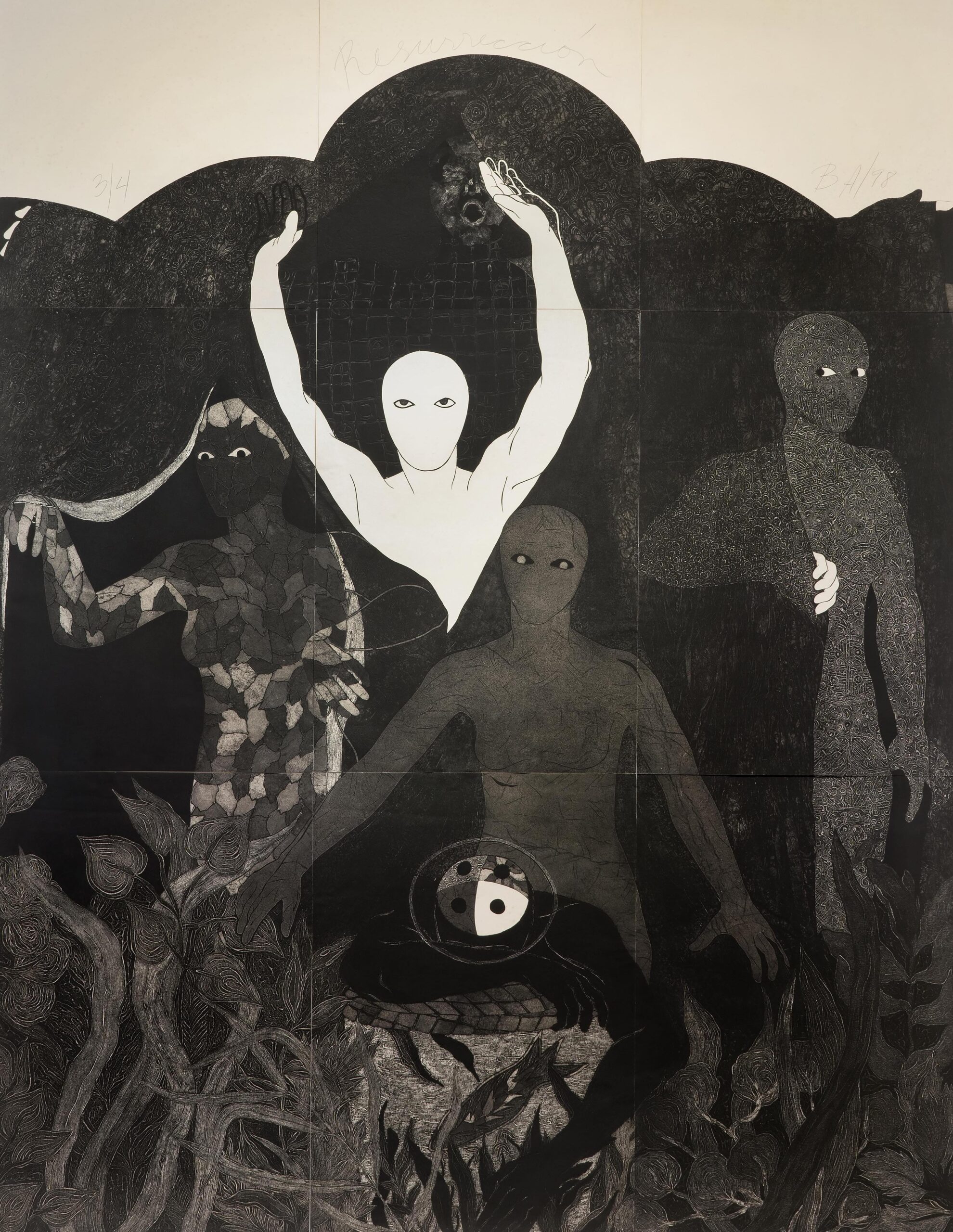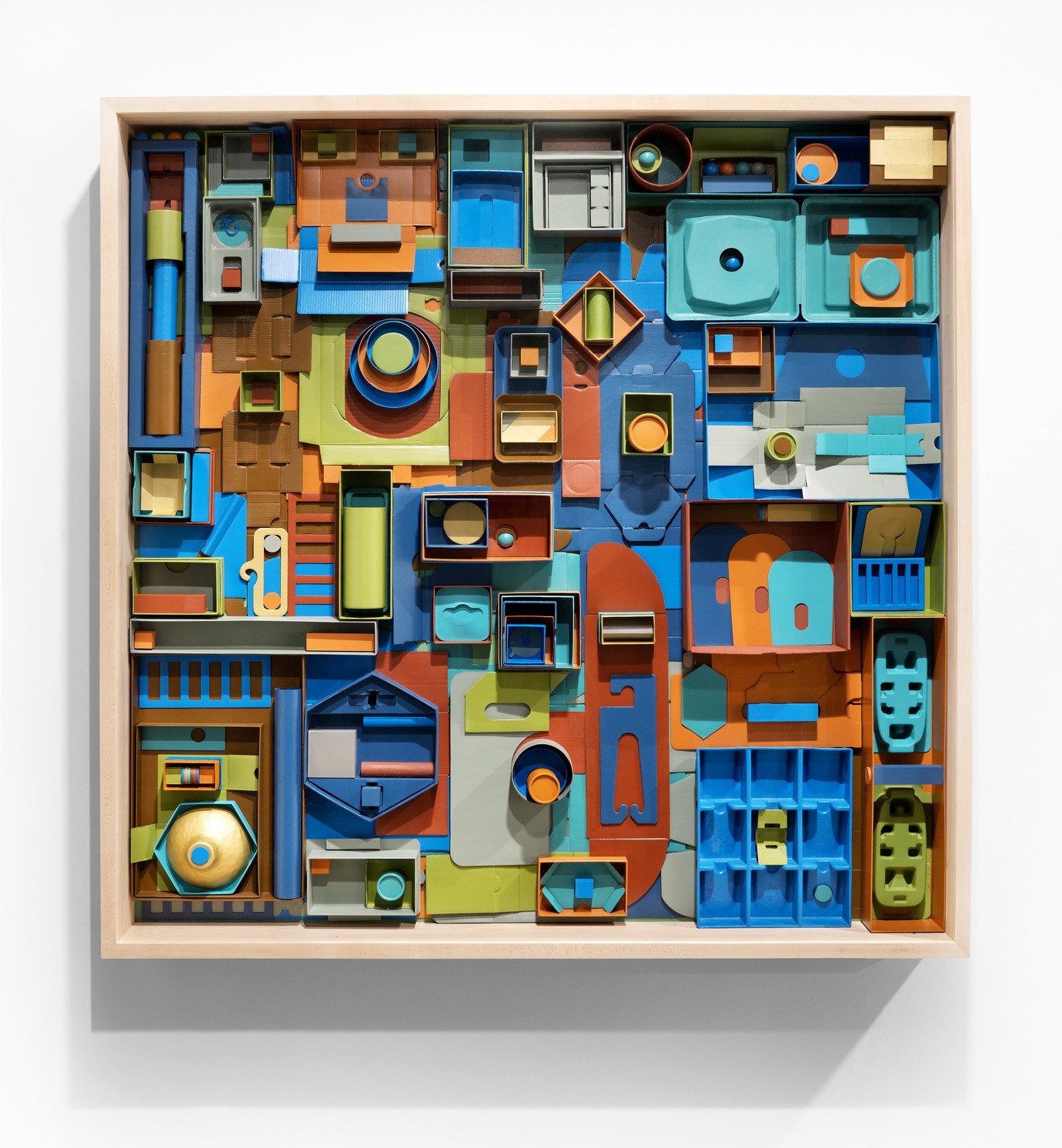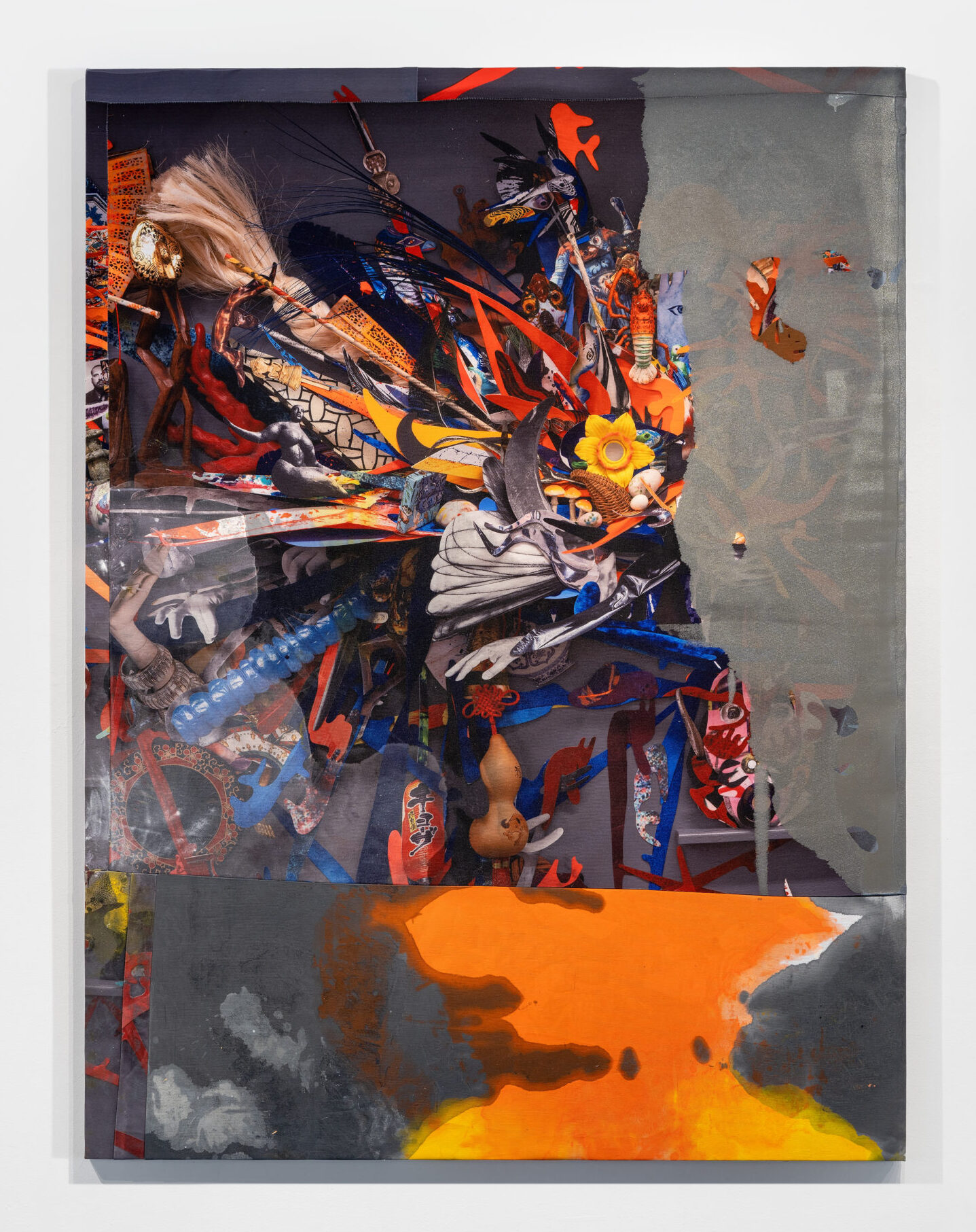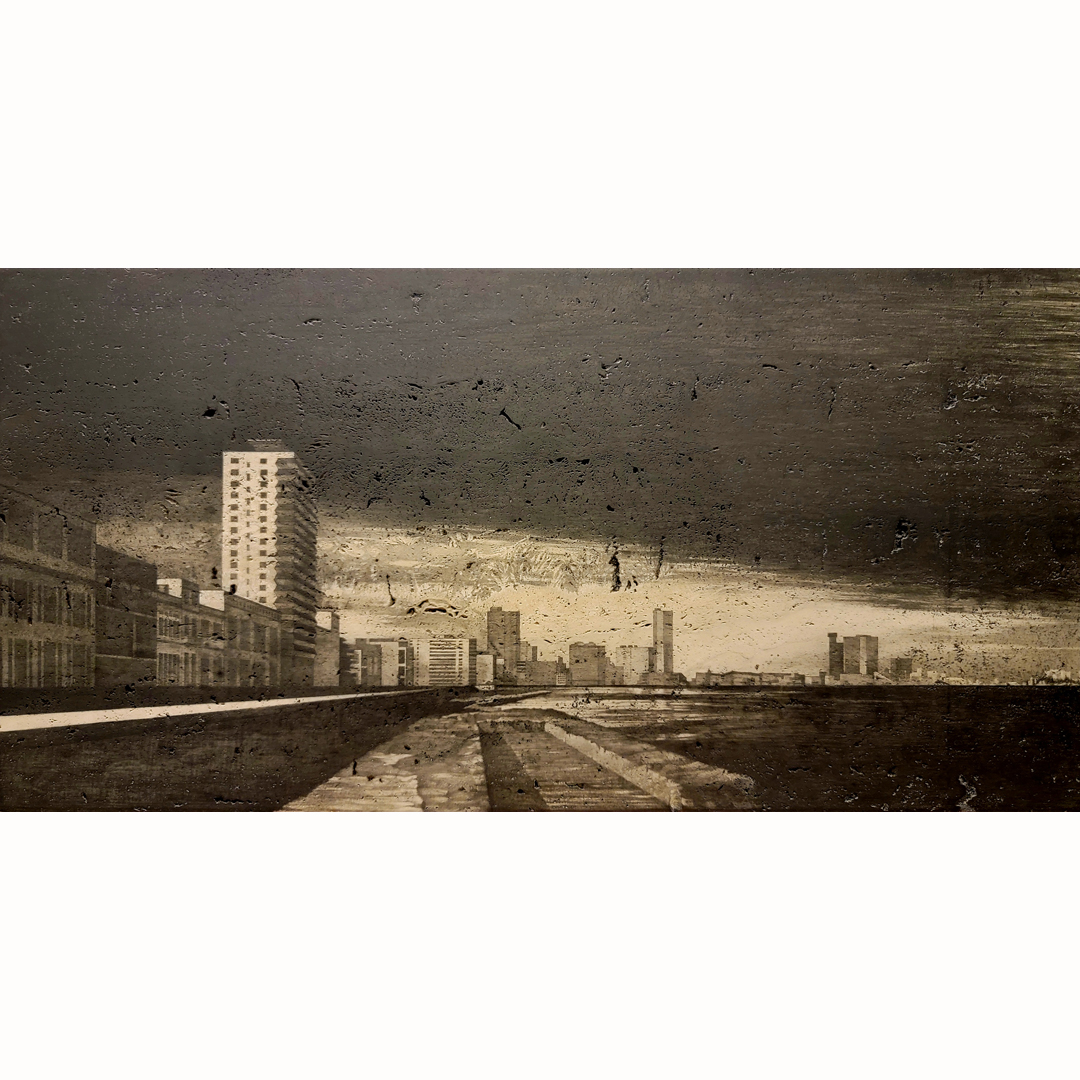Art Basel Miami Beach
December 6 – December 9, 2018
For exhibition in the Art Basel Miami Beach Galleries Section (2018), Booth F26, David Castillo Gallery presents works in sculpture, painting, photography, installation, and paper by artists Belkis Ayón, Sanford Biggers, Adler Guerrier, Quisqueya Henriquez, Pepe Mar, Glexis Novoa, Xaviera Simmons, Shinique Smith, and Vaughn Spann.
Opening day of the Art Basel Miami Beach booth is organized across a visual, conceptual and temporal divide: black and white. On this first day of its presentation, the gallery will feature a collection of black-and-white works that contrast, rupture, and detourn the social, cultural, and political implications of longstanding color-coded dualisms.
The symbolic antagonisms between black and white—and the proxies of dark and light, night and day—trace enduring and fundamental oppositions of human philosophy, society, and language; of the grand nature of truth and meaning. Derrida framed these binary oppositions as “violent hierarchies” that define Western constructs of knowledge and power.
Throughout art history, black and white emerged as curious markers of life and death both in metaphor and reality: the Old Masters painted with poisonous white pigments made from lead, while the black pigment in their work—known commonly as “bone black”—was made by burning the bones of deceased animals. Blacks and whites defined the most extreme of boundaries; the deepest shadows and the brightest glimmers of light.
For the nearly hundred years which spanned Modernism from the mid-nineteenth century to the mid-twentieth, the world was represented and preserved in blacks and whites; print, film, and later television bore this telling marker of the time. And it was during this black-and-white length of history that the tensions between blackness and whiteness as racial markers culminated into a movement of civil rights. It was in 1952 when Frantz Fanon, in the book Black Skin, White Masks, spoke of his own conflicted identity; he rejected the values and identifications imposed upon him by Western culture at-large, reclaiming an identity for himself and others who shared in his non-whiteness.
The works in this presentation approach black and white across broadly converging and digressing conditions.
BelkisAyón’s visual vocabulary is sober yet sumptuous, capturing haunting, ghost-like figures in stark contrasts of bright whites and deep blacks. Deeply enmeshed within the origins, rituals, and teachings of Afro-Cuban religions, the moody, penumbral magic of Ayón’s work carries with it the mystical legacies that so fascinated her before her untimely death.
Sanford Biggers plays with the broad scales of time and culture in works that collage histories both far and recent. His floor sculpture marries his interest in participatory works and geometry; while his quilt constructions tell the uneasy histories of America’s violent racial past through the aspirations of Afrofuturism.
Adler Guerrier’s work across collage and print mines the cultural make-up of Miami—and of the artist’s own background as a Haitian-American living in one of the largest centers of the Haitian diaspora—drawing out themes of collectivizing belonging, seeking refuge, and claiming place.
Quisqueya Henriquez boldly claims the history of art for her own, actively mining and recombining references from Conceptualism and the greater lineage of Modernism to reframe this often staid history along new terms. She inserts herself into pictorial modes that have largely excluded the voices of those who are Other: women and Latin Americans.
Pepe Mar’s fabric paintings tell of a contemporary folklore between past and present, place, and time, in curiously collaged works that draw from the artist’s own oeuvre; much of the fabrics used in these pieces are printed from photographs from along Mar’s own fifteen-year career, creating new contexts for these past works from combining and re-combining these imageries.
Glexis Novoa sources fragments of Carrara marble from the crumbling edifices of Cuban buildings and draws upon them aspirational images of future cities; grand and gleaming architectures in stark contrast to the current realities of Cuban life. Novoa imagines urban infrastructure as a broad political message and one that pulls at the opposing tensions of what is and what could be.
Xaviera Simmons’ new body of text paintings, photographs, and sculptural furniture play with ideas of nomadism and the enduring legacies on which the contemporary American narrative is founded; histories of racial inequality, perseverance, and unyielding calls for change. Simmons often inserts herself into her works, aligning with the disparate pasts to obscure the boundaries between then and now, us and them.
Shinique Smith’s body of work takes form across modes of production that collage found objects, second-hand clothing, and references to the flows of global commerce; how goods are produced in the Global South, transported to the West and then used, discarded, and returned to those countries from which they originated for recycling. Her paintings are often of sweeping, swirling forms incorporating Eastern calligraphic traditions.
Vaughn Spann creates evocative and at times deeply personal paintings that blend abstract formalism with the uneasy social nuance of the age. The visual vocabulary of his Dalmatian series—which brings together black-and-white patterns—examines the shifting associations of various geometries and forms across his childhood, recent history, and a deeper past.
Beyond the first day of its presentation, the booth will be re-envisioned to a presentation of full color works, evolving daily in its rotation of gallery artists. Taken as a whole, the David Castillo Gallery booth will present an ever-changing context of works that together reflect the flux of life today: the shifting landscapes of identity.

